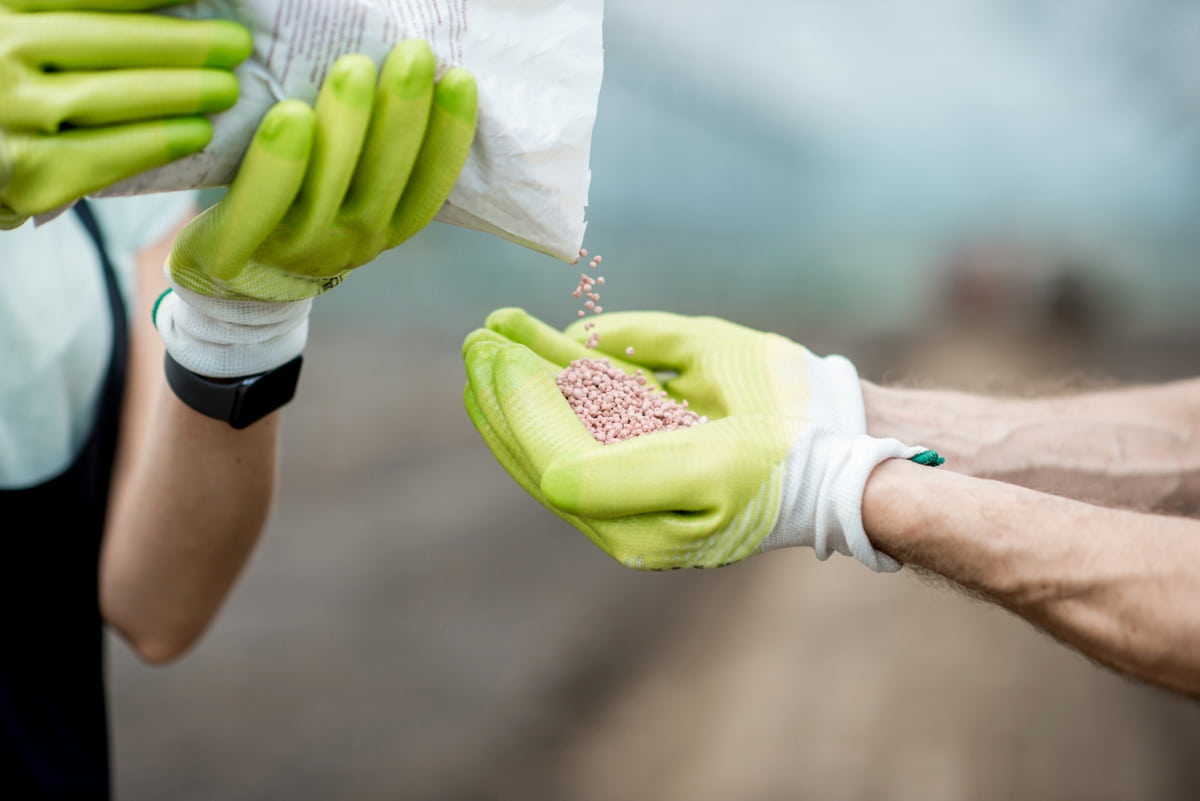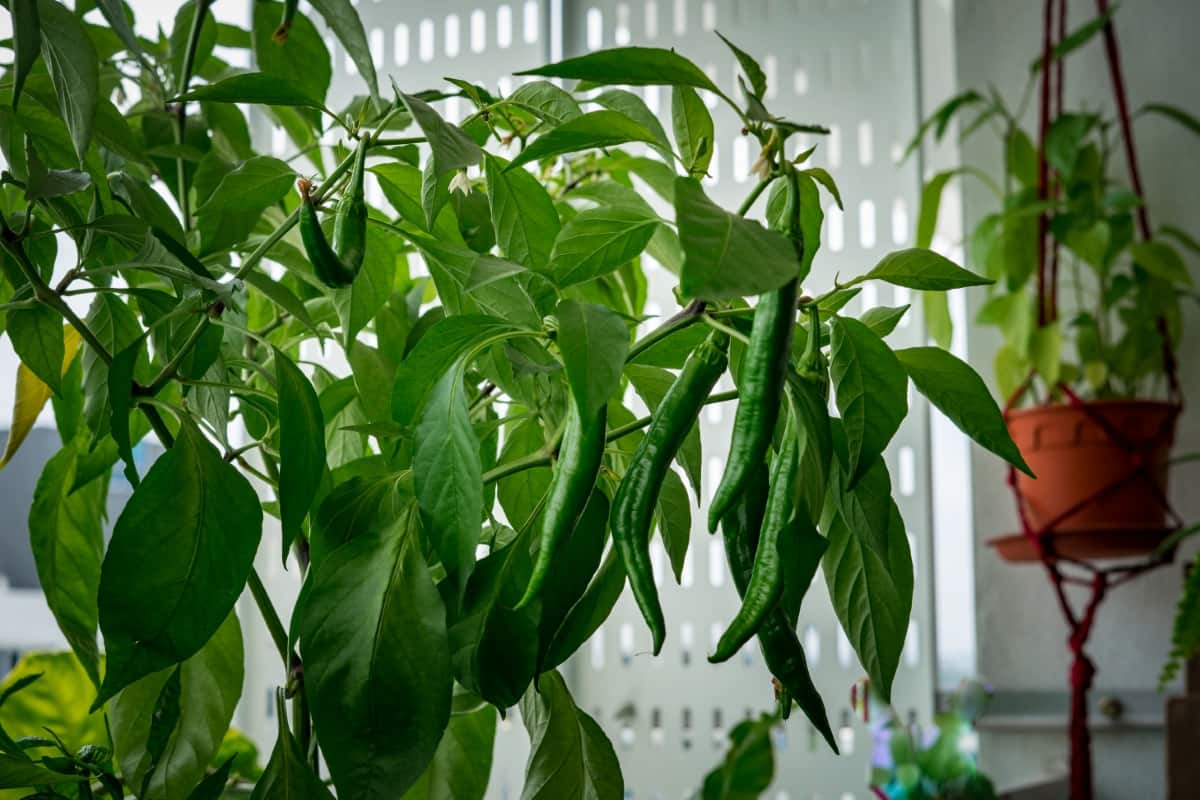Peppers are popular for container gardening, as they thrive in pots and add a vibrant touch to any garden or balcony. To ensure healthy and productive pepper plants, it is important to provide them with the right fertilizer. This document will discuss the best fertilizer for peppers in pots, focusing on organic and natural choices. Additionally, we will explore how to make homemade fertilizer, understand the importance of the NPK ratio, and learn when and how to apply fertilizers to your pepper plants.

Best Fertilizer for Peppers in Pots
Understanding the Nutritional Needs of Peppers in Pots
When growing peppers in containers, it’s important to provide them with the right nutrients to support their development. Peppers require a balanced fertilizer high in phosphorus, potassium, and nitrogen. Phosphorus promotes strong root development, while potassium enhances fruit production.
Nitrogen is crucial for leafy growth. Additionally, peppers benefit from regular watering to maintain moisture levels in the soil. A well-draining potting mix is recommended to ensure proper water retention and avoid overwatering. Regularly checking the pH levels of the soil is also vital, as peppers prefer a slightly acidic to neutral environment.
Organic Fertilizers for Peppers in Pots: Nurturing Your Plants Naturally
Organic fertilizers are excellent for nurturing pepper plants in pots, providing a natural and sustainable approach to plant care. These fertilizers are produced from natural sources, such as compost, and offer numerous benefits. They enrich the soil with essential nutrients, enhancing plant growth and overall health.
Organic fertilizers promote soil fertility and microbial activity, resulting in stronger and more resilient plants. They also have a lower risk of burning plants than synthetic fertilizers and contribute to a healthier environment. By opting for organic fertilizers, you can ensure the well-being of your pepper plants while minimizing your ecological footprint.
Natural Fertilizers for Peppers in Pots: For Environmentally-Friendly Options
There are several options available that are both effective and eco-friendly. One option is compost, which provides essential nutrients to the plants. Another option is worm castings, rich in nutrients and beneficial microorganisms. Additionally, seaweed or kelp extracts can be used as a foliar spray to boost growth and improve overall plant health. These natural fertilizers are a sustainable choice that helps maintain a healthy ecosystem while promoting the growth of peppers in pots.
Homemade Fertilizers for Peppers in Pots: DIY Solutions for Optimal Plant Health
- The most popular choice is compost tea, made by steeping compost in water.
- Banana peel fertilizer, made by drying banana peels and grinding them into a powder, can be applied around the plant’s base.
- Additionally, fish emulsion from decaying fish can be diluted and used as a liquid fertilizer. Experimenting with these homemade fertilizers can help peppers thrive in pots.
- Additionally, eggshell fertilizer can be made by crushing eggshells and mixing them into the soil to provide calcium.
NPK Ratios and Their Importance in Selecting Fertilizers for Peppers in Pots
NPK refers to the three primary nutrients: nitrogen, phosphorus, and potassium. These ratios indicate the relative amounts of each nutrient in the fertilizer. Peppers have specific nutrient requirements, and the right NPK ratio ensures optimal growth and yield. For example, a balanced ratio of 10-10-10 provides equal amounts of each nutrient, while a higher phosphorus ratio, such as 5-10-10, promotes flower and fruit development.
In case you missed it: How to Overwinter Peppers: A Guide to Cold and Warm Regions

Slow-Release Fertilizers: Enhancing Nutrient Availability for Peppers in Pots
These fertilizers are designed to gradually release essential nutrients over a period, providing a consistent supply of nourishment to the plants. Gardeners can use slow-release fertilizers to ensure their pepper plants receive a steady and balanced diet, leading to healthier growth and increased yields. Additionally, these fertilizers reduce the risk of nutrient leaching and minimize the need for frequent applications. Overall, slow-release fertilizers effectively maximize nutrient availability and promote optimal growth in peppers grown in pots.
pH Levels and Fertilizer Selection for Peppers in Pots: For Balanced Soil Environment
The optimal pH range for peppers is between 6.0 and 6.8, which provides the necessary nutrients for healthy growth. Testing the soil pH regularly and adjusting using pH modifiers, such as sulfur or lime, is essential to create the ideal conditions. Additionally, choosing the appropriate fertilizer is important to provide essential nutrients for peppers. Balanced fertilizers containing nitrogen, phosphorus, and potassium are recommended for promoting strong root development, healthy foliage, and abundant fruit production.
The Importance of Timing: When to Apply Fertilizer to Peppers in Pots
It is recommended to apply fertilizer to pepper plants in pots during the early stages of growth. This is typically done after transplanting the seedlings into the pots. Fertilizer should be applied once the plants have established a strong root system, usually around two to three weeks after transplanting. Applying fertilizer at this stage helps provide the necessary nutrients for healthy plant development. Following the recommended dosage and application instructions on the fertilizer packaging is important to avoid over-fertilization, which can harm the plants.
How to Apply Fertilizer to Peppers in Pots: Techniques for Maximum Effectiveness
First, choose a balanced fertilizer with equal nitrogen, phosphorus, and potassium. Start by applying fertilizer when the peppers are about 6 inches tall and repeat every 4-6 weeks throughout the growing season. Avoid over-fertilization, as it can harm the plants. Apply the fertilizer evenly on the soil surface, avoiding contact with the plants’ stems or leaves. Water the pots thoroughly after applying fertilizer to prevent any burning effect. Regular fertilization will promote healthy growth and abundant harvest of peppers in pots.
In case you missed it: Pepper Plant Healthy But No Flowers: Reasons, Remedies, Tips, and How to Fix

Water-Soluble Fertilizers to Boost Nutrient Uptake for Healthy Pepper Plants in Pots
These fertilizers are designed to dissolve easily in water, allowing plants to absorb essential nutrients quickly. By providing a balanced mix of nitrogen, phosphorus, and potassium, water-soluble fertilizers contribute to the overall health and vigor of pepper plants. They also contain other essential micronutrients, such as iron, manganese, and zinc, vital for optimal growth and development. Regularly applying water-soluble fertilizers ensures that the pepper plants receive a continuous supply of nutrients, producing robust foliage, abundant flowering, and high-quality fruits.
Best Fertilizer Application Techniques for Peppers in Pots: Dos and Don’ts
Do‘s
- Use a balanced fertilizer: Look for fertilizers with equal nitrogen, phosphorus, and potassium (NPK) to provide essential nutrients.
- Follow the recommended application rates: Over-fertilizing can result in excessive foliage growth and reduced fruit production.
- Apply fertilizer evenly: Spread the fertilizer around the base of the plant and avoid direct contact with the leaves.
- Water before and after fertilizing: This helps prevent root burn and ensures the nutrients reach the plant’s roots.
- Use slow-release fertilizers: These provide a steady supply of nutrients over a period of time, reducing the risk of nutrient deficiencies.
Don’ts
- Don’t over-fertilize: Excessive amounts of fertilizer can cause nutrient imbalances, leaf burn, and stunted growth.
- Don’t apply fertilizer on dry soil: Always water the soil before fertilizers to prevent root damage.
- Don’t use high-nitrogen fertilizers: While nitrogen promotes leafy growth, too much can delay fruiting and reduce yield.
- Don’t fertilize during extreme weather: Avoid fertilizing during high heat or heavy rainfall, as it can wash away the nutrients or harm the plants.
5-10-10 Fertilizer for Peppers
5-10-10 fertilizer is popular for peppers because it provides vital nutrients for healthy growth and fruit production. This type of fertilizer contains 5% nitrogen, 10% phosphorus, and 10% potassium. When applying 5-10-10 fertilizer to peppers, following the recommended dosage instructions on the packaging is important.
In case you missed it: How to Prune Pepper Plants: Best Time to Trim, Tools and Techniques to Cut Back for Maximum Yield

Apply the fertilizer evenly around the plant’s base, not letting it come into direct contact with the stems or leaves. Water your pepper plants thoroughly after applying the fertilizer to ensure proper absorption. Regularly fertilizing peppers with 5-10-10 can help maximize their productivity and yield.
Conclusion
The best fertilizer for peppers in pots is organic, natural, and preferably homemade. Understanding the NPK ratio and following the correct application guidelines will ensure healthy and productive pepper plants. By choosing environmentally friendly fertilizers, you can contribute to sustainable gardening practices. Happy growing!
- Feed Your Flock for Less: Top 10 Tips to Save on Chicken Feed
- Ultimate Guide to Ossabaw Island Hog: Breeding, Raising, Diet, and Care
- Hatching Answers: The Top 10 Reasons Your Chickens Aren’t Laying Eggs
- Eggs and Economics: Breaking Down the Cost of Raising Backyard Chickens
- Defend Your Greens: Proven Methods to Keep Iguanas Out of Your Garden
- Ultimate Guide to Cinnamon Queen Chicken: A Comprehensive Guide for Beginners
- Ultimate Guide to California Tan Chicken: Breeding, Raising, Diet, Egg-Production and Care
- Ultimate Guide to Marsh Daisy Chicken: Breeding, Raising, Diet, and Care
- 10 Types of Chicken Farming Businesses You Can Start for Profits